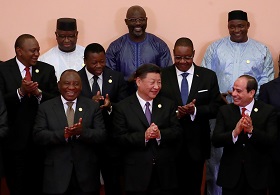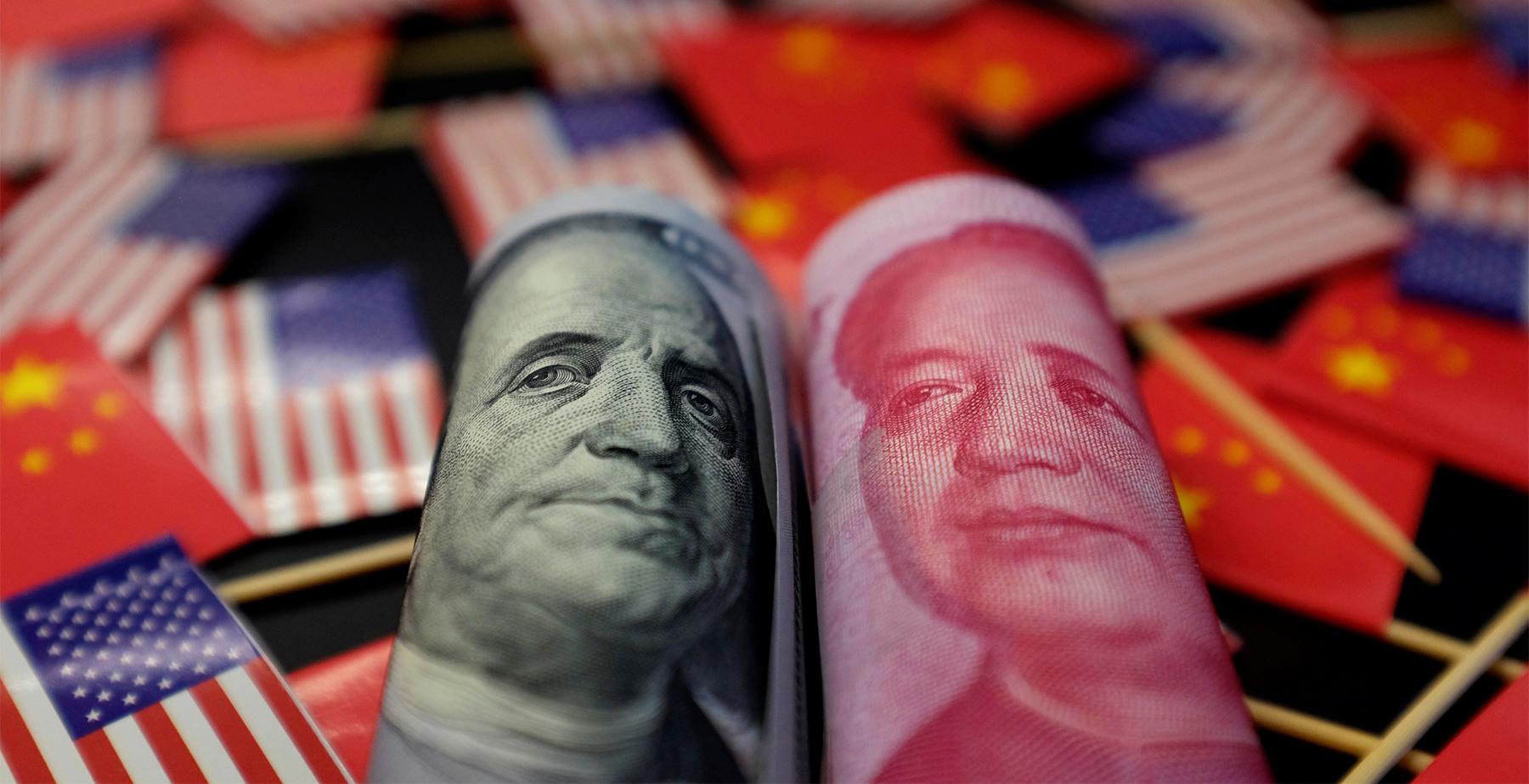Since the beginning of 2020, humanity has been shadowed by the fear and panic of COVID-19, which might cause one to neglect some subtle but significant changes in the world. In November 2019, Washing, a non-member of the Belt and Road Initiative (BRI), the China-led infrastructure project, launched its “Blue Dot Network” (BDN) with Australia and Japan. This project is “a multi-stakeholder initiative to bring together governments, the private sector and civil society to promote high-quality, trusted standards for” sustainable and principles-based “global infrastructure development”. Similarly, in September 2019, the European Union and Japan, also non-members of the BRI, announced the “Partnership on Sustainable Connectivity and Quality Infrastructure” (PSCQI), encompassing the Indo-Pacific, Eastern Europe and Central Asia regions.
According to Bruno Macaes, “in the end, the question of whether a new world order will be born, or the status quo preserved is less important than the question of whether the outcome will be determined peacefully or whether China and America are destined for war”. So, why not let the two global powers just rival each other in terms of the infrastructure? At least this is not a military collision. Essentially, the increasing connections that the newly established infrastructure may bring are beneficial to the global economy, which is far better than the current struggle for trade, a game that highlights the side that will suffer the least rather than the winner. Individuals may be still anxious about a potential Cold War, but it is essential to remember that the historical Cold War was a less chaotic period than it is today. Also, due to the race of the Eastern Bloc and the Western Bloc, great economic and technological strides have been made during this period. Interestingly, differing from the separated Cold War, the contest in the infrastructure domain is doomed to promote economic integration and globalization. The core principles of the BRI are interdependence and connection. Similarly, that of the BDN and PSCQI are respectively network and connectivity. Actually, they are just fulfilling the same functions but in distinct ways.
In this context, let the China-represented authoritarian capitalism versus the US-led liberal capitalism compete regarding the infrastructure and finally let the winner prevail. I suppose there will be one day when the roads or other infrastructure of adversary camps may eventually meet and connect because of their natural attributes. Finally, the opposition of the two camps will gradually fade away, and compromises will be made. It is not the first time that human beings have been taught to abandon narrowness and stand together. In essence, the current coronavirus is one example, and the building of infrastructure in the future will likely be another.
Since the beginning of 2020, humanity has been shadowed by the fear and panic of COVID-19, which might cause one to neglect some subtle but significant changes in the world. In November 2019, Washing, a non-member of the Belt and Road Initiative (BRI), the China-led infrastructure project, launched its “Blue Dot Network” (BDN) with Australia and Japan. This project is “a multi-stakeholder initiative to bring together governments, the private sector and civil society to promote high-quality, trusted standards for” sustainable and principles-based “global infrastructure development”. Similarly, in September 2019, the European Union and Japan, also non-members of the BRI, announced the “Partnership on Sustainable Connectivity and Quality Infrastructure” (PSCQI), encompassing the Indo-Pacific, Eastern Europe and Central Asia regions.
Even without mentioning China, it is not difficult to establish that the BDN and PSCQI projects are the Western strategic responses to the BRI in the infrastructure area in Indo-Pacific and beyond, an identical scope that the BRI focuses on. Conspicuously, both projects try to compete with the BRI thanks to its comparative advantages. Multi-stakeholder in the BDN compares with the SOEs-and-states domination in the BRI. High-quality, trusted standards, sustainable and principles-based development in the BDN and PSCQI contrasts with the potential economic leverage, debt trap of some Western narrative and the well-acknowledged vagueness in the BRI. The BDN and PSCQI are born to challenge the BRI.
Furthermore, as the announcer of the BDN, the US Commerce Secretary Wilbur Ross, said that the US has “no intention of vacating military or geopolitical position” in the Indo-Pacific and is “here permanently, and the US “will be continuing to invest more” in this region, alluding to the incoming power confrontation between the US and China in this area. More directly, in August 2018, US President Donald Trump ranted behind closed doors with CEOs that the BRI is “insulting” and plays havoc with the global trade. In fact, “He didn’t want it” and “he had told Xi as much to his face”.
In February 2020, just one month after the first-phase trade deal between China and the US, Mr Donald Trump has embarked on his maiden voyage to India. During his visit, as the firm vocal opponent of the BRI, India almost agreed with the US to join the BDN and just needs to negotiate details. To this extent, the first-phase trade deal is not a truce, but an opening song that signals more dramatic events between the US and China.
Currently, it seems that the world has been divided by opposing viewpoints of the BRI and infrastructure projects. In the future, the globe might be potentially split up into three camps: the China-led BRI, the West-led anti-BRI and neutral countries. Possibly, the third category does not want to side with either China or the West but wants to play the swing-role in order to benefit from their competition. This does sound like a new Cold War, but it differs because of the current intertwined economic ties among these three camps. Arguably, this is the fate of this century: a more complex and entangled world wherein no one knows what the future will be.
However, I argue that this situation is not necessarily a bad deal. There is the inevitability of the competition between the rising power, China, and the ruling power, the US. According to Bruno Macaes, “in the end, the question of whether a new world order will be born, or the status quo preserved is less important than the question of whether the outcome will be determined peacefully or whether China and America are destined for war”. So, why not let the two global powers just rival each other in terms of the infrastructure? At least this is not a military collision. Essentially, the increasing connections that the newly established infrastructure may bring are beneficial to the global economy, which is far better than the current struggle for trade, a game that highlights the side that will suffer the least rather than the winner. Individuals may be still anxious about a potential Cold War, but it is essential to remember that the historical Cold War was a less chaotic period than it is today. Also, due to the race of the Eastern Bloc and the Western Bloc, great economic and technological strides have been made during this period. Interestingly, differing from the separated Cold War, the contest in the infrastructure domain is doomed to promote economic integration and globalization. The core principles of the BRI are interdependence and connection. Similarly, that of the BDN and PSCQI are respectively network and connectivity. Actually, they are just fulfilling the same functions but in distinct ways.
In this context, let the China-represented authoritarian capitalism versus the US-led liberal capitalism compete regarding the infrastructure and finally let the winner prevail. I suppose there will be one day when the roads or other infrastructure of adversary camps may eventually meet and connect because of their natural attributes. Finally, the opposition of the two camps will gradually fade away, and compromises will be made. It is not the first time that human beings have been taught to abandon narrowness and stand together. In essence, the current coronavirus is one example, and the building of infrastructure in the future will likely be another.







